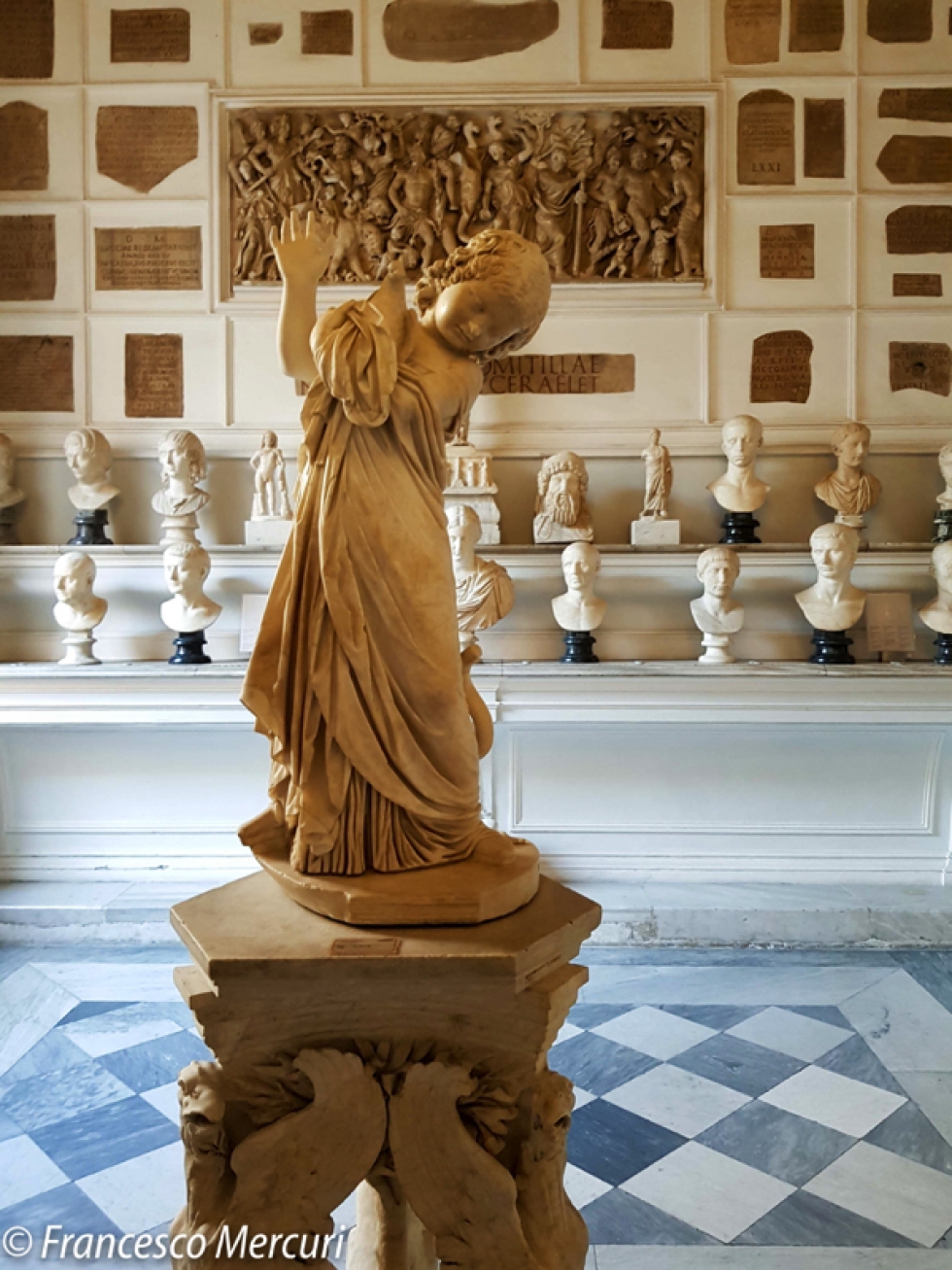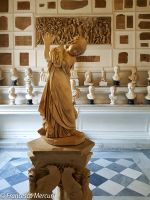These new museums, therefore, are called “Capitoline” because of the location in which they are born, the Capitoline Hill, but we will talk about them more in detail at a different time. What we intend to analyze now is one of their most peculiar and known works: the “Girl with a Dove”. One of the rooms of the so-called “Palazzo Nuovo”, New Palace, that hosts the museums together with the one in front of it, “Palazzo dei Conservatori”, is dedicated to doves and takes its name from them. These birds don’t actually represent the theme of all the works in the room (called for this reason “room of the doves”), but just of the two most important works in there: our statue and the famous “Mosaic of the Doves”. Nevertheless, it’s our work the one set in a privileged position; it was deliberately placed in the centre of the scene both to immediately attract viewers’ attention and to enhance its importance not having any other work next to it. The statue is 92 cm tall and is positioned in the centre of the room, supported by a stone pedestal. It is made of Lunense marble, that today goes by the name of Carrara marble; it is an extremely shining, uniform pure white marble, that sometimes presents some golden sheens. The name “Lunense” derives from the city of Luni, the most important mining centre for this marble, next to which in the following centuries the modern Carrara developed. Going back to our work, the statue represents a standing girl, wearing a chiton and a cloak (typical Greek garments) and holding with her left arm a dove, half-hidden by the cloak’s folds. This act is a protective one. The girl turns herself and looks below to her left, where she sees, with great surprise, a snake. Instinctively, she defends the dove without ceasing to fear; her face communicates harmony and serenity as if innocence and absence of mischievousness, typical of childhood, wouldn’t make her perceive the danger. The work seems to show all this, and the fact that it arrived to contemporaneity almost completely sane makes it even more beautiful. Only the snake has been restored in modern times. This masterpiece of Roman art was probably created in the 2nd century C.E. (maybe Trajan era) and it is a copy of a Greek Hellenistic original. Hellenistic art developed a particular attention for anything regarding everyday life, especially what involved children, their plays and their interests. This statue, that was part of cardinal Albani’s private collection, was bought for the Capitoline Museums in 1733 and set in the same room it occupies today. It has been moved just once between 1830 and 1945 in the room of the “Dying Gaul”, not very far from the original one. A last mention has to go to the little bird, protagonist with the girl of this sculpture. It looks in front of itself, completely unaware of the impending danger. The dove seems to be the ideal game partner for the girl; symbol of purity and delicacy, the dove was a very popular subject of classic sculpture, often represented on kids and adults’ tombs. Moreover, we should not forget that, according to Homer, Zeus (Jupiter for Romans), the king of the gods, as a baby was nourished by two doves and that this bird was sacred for Aphrodite (Venus for Romans), goddess of beauty and love. Even gods loved the dove . . .
Giuseppe Rosselli








